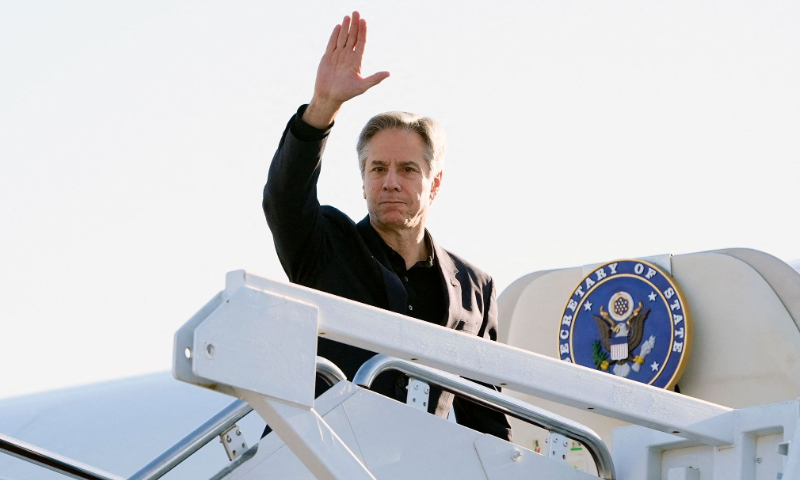China’s press briefing is timely for the public and the US side to correctly understand the significance and role of this interaction. As an important event for China and the US to implement the consensus reached by the two heads of state in San Francisco last year, China, while expressing its welcome to Blinken’s visit, also puts forward its expectations and views on the goals to be achieved by this trip. It takes about 20 hours to fly from Washington to Shanghai, which is enough time for Blinken and his team to look at the list carefully, so as to establish a correct understanding and button the “first button” before landing in China.
From the current trends in US public opinion, it is more evident how targeted this briefing from the Chinese side is. Just before Blinken’s visit to China, the US media continued to play the trick of “exerting pressure to demand concessions.” On the one hand, American media cited anonymous sources claiming that the US is drafting sanctions that could cut some Chinese banks off the global financial system, purportedly to increase “diplomatic leverage” for Blinken’s visit. On the other hand, the US State Department’s 2023 Country Reports on Human Rights Practices continued to spread lies about Xinjiang, falsely accusing China of engaging in so-called “ethnic genocide” and stating that Blinken would “raise human rights at the highest levels and in the clearest way.” The US attempts to spread misconceptions and misperceptions about China through its hegemony in certain circles. To be honest, this approach has been overused and is greatly discounted if relied upon repeatedly.
During the meeting between the heads of state of China and the US in San Francisco last year, President Xi Jinping proposed the “five pillars” to support the “San Francisco Vision” of China-US relations, with “jointly developing a right perception” occupying the foremost position. China focuses on five major goals for Blinken’s visit, with “establishing a right perception” still ranking first. Why does China-US relations continue to experience fluctuations, causing the international community to remain concerned? Why does the US side turn a normal visit into what seems like an “ultimatum”? The fundamental reason is that the US side has yet to establish a correct perception of China. If this issue is not resolved, it is like walking at night blindfolded and it will easily lead to mistakes and even danger.
As everyone knows, the so-called “ethnic genocide” in Xinjiang is an outright “lie of the century,” which has been debunked extensively worldwide. Even under the carefully crafted little iron curtain by Western media, the voices of justice exposing this lie are growing louder. Nevertheless, this “lie of the century” repeatedly appears in the so-called annual human rights report of the US State Department. Apart from raising doubts about the quality of the report, it also makes people see more clearly the true intentions of certain forces in the US to interfere in China’s internal affairs and suppress Chinese industries.
Behind this extreme phenomenon is a deeper issue: some of the differences between China and the US stem from either America’s fundamental misunderstanding of China’s true situation or deliberately portraying China as a rival of the US and distorting perceptions of China for the purpose of containing China. In recent years, the US’ misperceptions of China have led to severe difficulties in bilateral relations, a point that China has repeatedly emphasized to the US. However, US diplomacy tends to prioritize discussing issues from its own interests, adopting a so-called “pragmatic” approach. Combined with a style of acting that suggests “the US sets the standard for perception,” this approach often leads to self-righteous and absurd arguments regarding China’s perceptions, putting pressure on bilateral relations.
A three-day trip is not a short visit. It is able to cover extensive and in-depth discussions on a wide range of issues. China-US relations should stabilize and improve, moving forward on a path of stability, health, and sustainability. In this regard, there is ample room for imagination and cooperation for both countries. At the same time, China has its own interests to uphold, principles to defend, and bottom lines to maintain. Hopefully the US side remains sufficiently clear-minded and avoids any misjudgments.




